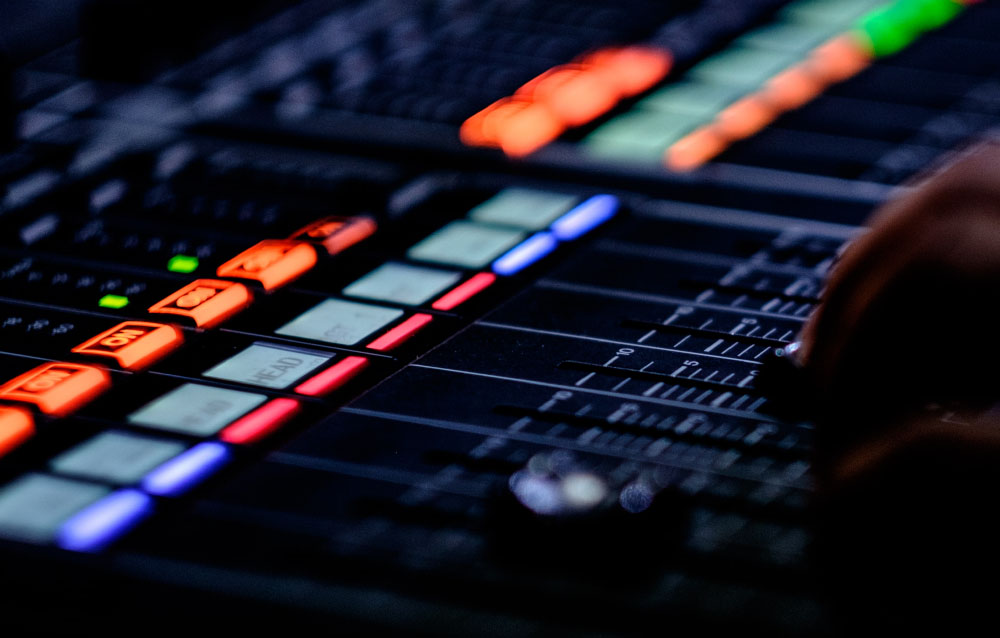In an ideal world, live sound engineers would have all the time they needed to perform an in-depth audio analysis of every input that finds its way into their consoles. We would be met with enthusiastic artists that are willing to hit those drums or sing just the right selection of melodies in an orderly fashion, without being disrupted by guitar players trying out their amps and pedals and blasting over everyone with their levels.
We could do it in a venue with a quiet audience, who would appreciate the amount of meticulous work we have to do to get that perfect sound, so that we would not have any differences in absorption, temperature and humidity between the sound check and the show.
We would have a vast selection of microphones, perfect acoustic isolation of loud amps and drums from sensitive condenser mics on violins, and magical assistants who would know what to patch where before we even told them what to do.
Oh, what a wonderful world it would be..
But we don’t live in an ideal world. Sound checks are rushed, we struggle with artists playing with half the energy of a live gig, deal with an echoing venue, and only imagine how the room will sound in a few hours when the crowds fill the seats.
Especially if we’re working with a band for the first time, facing a new venue, looking at a PA system you have never worked on – it becomes a battlefield of priorities each sound engineer sets for themselves, trying to get to the things that will matter the most first and hope for the best for the rest. It raises the basic question: what matters the most to you?
“Kick, Please…”
Following the bare essentials of checking that everything is working and arriving at the console where we want to, we dive into gain staging, EQ and dynamics for each channel. For years, the way to perform sound check was the same for me – for a standard rock band, I would go through the drums (first kick, snare, toms, then all the cymbal stuff and then an “all together” moment of the drummer actually playing the beat), then bass, guitars, keys and lastly vocals.
I focused mainly on the key elements of the sonic image: lead vocal, kick, snare, and bass. My reasoning was simple: people want to hear the lyrics and dance to the beat.
But then I ran into minor trouble. During shows, I would always have access to those key elements I had worked on so meticulously during sound check, because they were always playing. I could always make adjustments to the lead vocal, because it would be constantly present in the mix – the same being true for kick drum or bass guitar.
On the other hand, the toms in the drum kit came on quite rarely – a hit here and there gave me just an idea of what to change and then I would have to wait for another hit. Multiply that by three or four toms, that one acoustic guitar solo that comes in just on one song, a percussion piece that gets hit twice during the entire show, and the amount of signals I had very limited access to grew quickly – and with it, my irritation of not being able to present every sonic detail of the performance in the best manner possible.
“Rack Tom, Please…”
One night I decided to change things up. I would fly through most inputs, making them sound OK, yet knowing there were still areas to polish. The focus was still on the lead vocal (everyone needs to hear those lyrics, right?), but I intentionally spent more time on instruments and channels that I knew would be playing rarely and randomly.
When the show started, I could quickly adjust the channels of instruments that were constantly playing and bring them to their full potential for that setting. I realized that this could be done even more efficiently because my focus was not drawn away by rare moments of some obscure channel nightmare that I should have fixed prior to its only appearance in the show.
I must admit that shows were more stressful during the first few minutes, but it quickly became more enjoyable and I found myself being able to focus on helping the energy of the band shine through instead of putting out fires, chasing random sounds to repair and not knowing if they would even appear again that night.
What To Tweak First?
Before there are riots in the streets of audio, allow me to clarify: I would never advocate for anyone to focus primarily on the toms of a drum kit if the overall sound is not at an acceptable level. Of course, the lead vocal should sound great and a great sounding rhythm section is a must.
It could also be argued that random hits and rarely played instruments can more easily be buried inside a mix than key elements of the act without a major upset to the show. I just want it kept in mind that if we truly want every detail of the performance to shine through, there could be a different approach to sound check from the one we’re typically using right now.
Focusing more on rarely used channels during sound check could actually free up your time and attention during the live show, helping you bring the performance to a new level of detail. Let’s face it – the most prominent elements of a performance will always receive the largest portion of your focus during the show, and they should.
But once in a while, think about that glanced-over second rack tom, quietly sobbing in the corner while being neatly tucked away in the depths of the mix. If you can help that sad fellow shine and stand proud with the rest of the gang of usually untouched channels, it will show the world that you care about every single detail of your mix. And in my book, being a great sound engineer boils down to exactly that.















